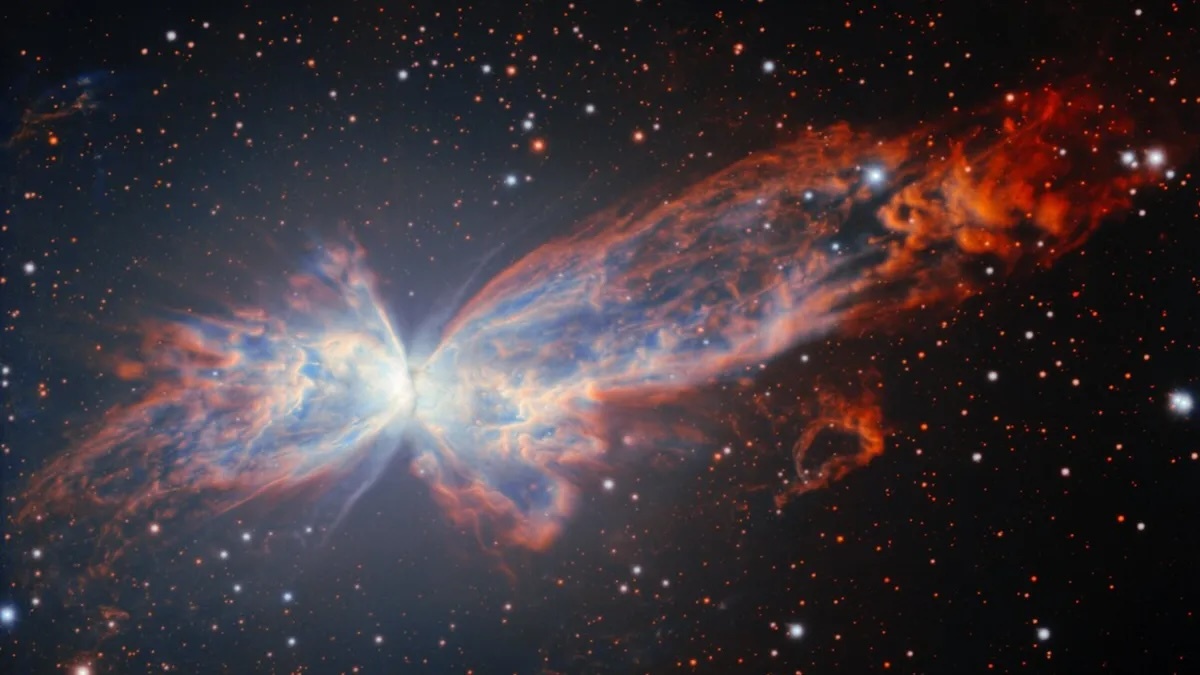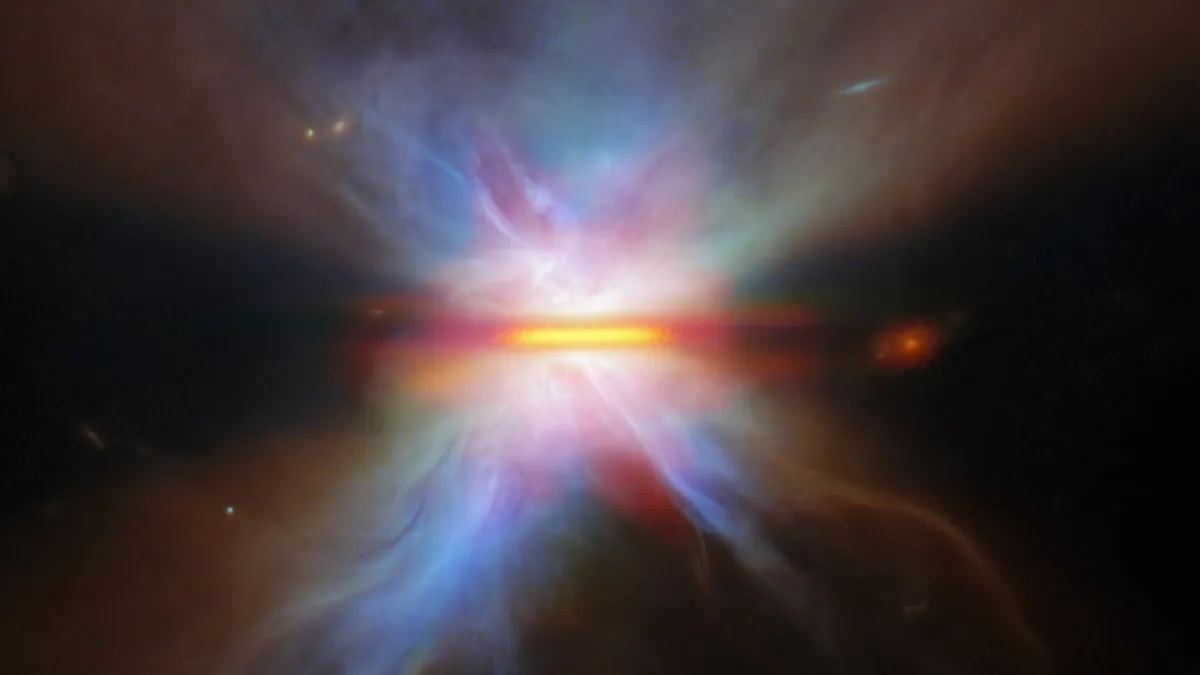28.11.2025
The 8.1-meter Gemini South telescope, located in the Andes, saw first light on Nov. 26, 2001.

The Butterfly Nebula imaged for the 25th anniversary of the Gemini South telescope. (Image credit: International Gemini Observatory/NOIRLab/NSF/AURA. Image Processing: J. Miller & M. Rodriguez (International Gemini Observatory/NSF NOIRLab)/T.A. Rector (University of Alaska Anchorage/NSF NOIRLab)/M. Zamani (NSF NOIRLab))
The Gemini South telescope is turning 25, and astronomers are celebrating its birthday with a dazzling new image of the Butterfly Nebula.
Also cataloged as NGC 6302, this planetary nebula is located in the constellation Scorpius, the Scorpion. Its precise distance is unclear, but astronomers think it's between 2,500 and 3,800 light-years away.
At the heart of the Butterfly Nebula is a white dwarf radiating at an incredible 250,000 degrees Celsius (450,000 degrees Fahrenheit). It was once a normal star that was a bit more massive than the sun. But when it began to reach the end of its life, it expanded to become a red giant, which then cast off its outer layers to form the nebula. What remained was its hot core in the form of the white dwarf with a mass two-thirds that of the sun. This is the fate of all stars with less than eight times the sun's mass.
Slower-moving material was ejected from the red giant's equatorial zone, forming the dark, dusty belt in the body of the butterfly in this image. The wings were then formed by faster-moving perpendicular outflows and sculpted further by a hot wind of radiation that signaled the star's final gasps.
That radiation wind energized the material in the nebula, heating it to 36,000 F (20,000 C) and ionizing the gas there. The red in the image indicates ionized hydrogen, and blue shows ionized oxygen. In about 5 billion years, the sun will also turn into a white dwarf surrounded by a pretty planetary nebula.
The Butterfly Nebula was chosen as the target for the 8.1-meter (26.6 feet) Gemini South telescope's 25th anniversary image by Chilean school students taking part in the Gemini First Light Anniversary Image Contest.
Located atop Cerro Pachón in the Chilean Andes, the Gemini South telescope is one-half of the International Gemini Observatory, which also incorporates its twin, Gemini North, on Mauna Kea in Hawaii. Both telescopes are operated by the National Science Foundation's NOIRLab, with funding from Brazil, Canada, Chile and the United Kingdom.
The Gemini telescopes were the brainchild of astronomer Fred Gillett. The aim of the telescopes was to provide continuous coverage of the sky from both the Northern and Southern hemispheres, using identical telescopes with adaptive optics and the capability to conduct near-infrared wide-field surveys. First light on Gemini North took place in June 1999, and on Gemini South in November 2000. Gillett died only a few months later, and Gemini North is named the Frederick C. Gillett Gemini Telescope in his honor.
Quelle: SC
+++

